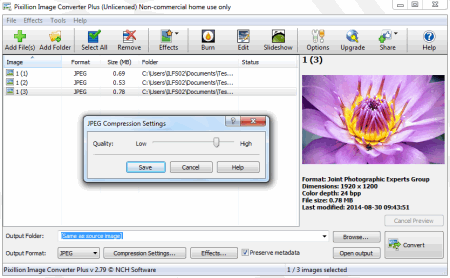
Image compression is a form of information compression often applied to small, usually digital images, in order to lessen their size for transfer or storage. Digital images have become very important to everyone. It seems everyone has a digital camera, and everyone wants to share the photos they have taken with friends and family. The ability to share pictures is one of the driving forces behind digital photography and the innovation that have brought us to this point.
Image compression can be used on the computer or through the image editing software. Photoshop, the most popular and widely used image editing program, comes with built-in compressor. If you already have Photoshop installed on your computer, simply open your Photoshop file and go to the image menu and select “learn compressor”. Photoshop’s built-in compressor will give you several different settings, which you can adjust to achieve the results you want. To compress images that are not in use, turn off the “saving image as” option.

Using a compression utility for reducing file size when editing images has several advantages. The first is that image compression reduces the overall size of the image. This is important if you need to upload a picture to a web page, because it can reduce the page size. In addition, if you compress images using an image compressor, the resulting file size will be smaller than the original image.
Using a compression utility that compresses images is very helpful when dealing with photos. The size of the image can affect the download time of the file. When using an image compressor, many options are available. Depending on the compression settings you choose, your image compressor may compress the file size into a couple of megabytes (MB) or a few megabytes (Mb).
For people who send images through email, a small image compression utility is vital. With a small file size, email recipients may download the image faster. If your image is too large, recipients may notice the image quality is lowered. When images are compressed by a professional image compressor, they often have better image quality than the image that was taken without compression. A small image file size reduces the number of clicks necessary for saving the image and reduces waiting time for a viewer to see an image.

Before using an image compressor, consider the quality of the image that you wish to compress. If the image quality is poor, the compressed file may not be as well downloaded as the uncompressed image would be. It is also possible that viewers will experience image corruption when viewing the image. Image compression tends to work best on colors unless there are other special images that need to be compressed. Most image compression software is available for Windows operating systems. Mac users can also use image compression programs, although these programs tend to be more complicated to use.
Before downloading image compression software or using image compression tools on your PC, make sure it is compatible with your operating system and hardware. Compression tools often compress the image using different methods. It is important to experiment with different compression settings to find the image quality that works the best for your needs. There are image quality websites that provide advice on how to maximize image quality through image compression.
Downloading images from the Internet is one of the easiest ways to compress images. Simply open the image in an Internet browser and view the image in full-screen mode. Changes to the image appearance or size will not be visible to other users of the same computer or browser at the current setting of the image compression tool.


